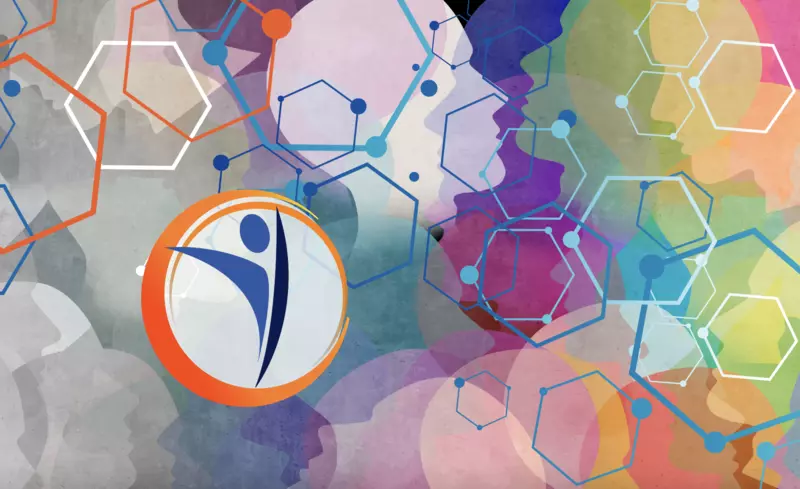What is Artificial Intelligence and How Can It Be Used
AI has become extremely popular because it allows you to automate repetitive processes and improve productivity.
What is Artificial Intelligence?
Although artificial intelligence (AI) technology is more than 50 years old, it is enjoying a massive renaissance. Utilizing machine learning and deep learning technologies, machines learn how to perform tasks on their own, without the need for programmers to continuously input specific instructions. The machine makes decisions independent of humans. AI has become extremely popular for the development of this technology because it allows people to automate repetitive processes and improve productivity.

Along with machine learning and deep learning, AI is a branch of computer science that attempts to simulate intelligent behavior in machines. It underpins technologies like robotics, natural language processing (NLP), cognitive computing, robotic process automation, and AIOps. Although AI does have its serious limitations, the technology is poised to revolutionize almost every industry over the coming decades. U.S. companies including Amazon, Apple, Facebook, Google, Netflix, and Microsoft are calling themselves “AI-first” companies, while, in China, Baidu, Tencent, DJI, and SenseTime have also made AI prominent in their growth plans.
The use cases tend to break down into process automation tools:
- workflow automation
- chatbots
- natural language processing (NLP), machine learning
- computer vision
- process mining
- and optical character recognition
AI is an essential part of digital transformation because it helps companies automate processes and increase efficiency through mechanization. Industries, as varied as travel, transportation, logistics, retail, automotive, oil and gas, chemicals, consumer packaged goods, agriculture, banking, insurance, as well as aerospace, and defense, are embracing AI because of its ability to lower costs, increase productivity, and help with personalization marketing.
Process Automation
Process automation automates a business procedure. AI helps to reduce manual labor, and increase efficiency, which usually improves a company’s profitability. Process automation can reduce human error. More efficient processes allow organizations to be nimble, which can be a competitive advantage, especially in fast-moving markets.
Process automation simplifies quality control and helps with governance and compliance, which often requires extensive documentation. It allows organizations to monitor their quality control function, helping identify problems that might occur in a company’s manufacturing and or services delivery process.
In the manufacturing industry, production line robots use AI to increase efficiency and productivity by reducing manual labor. Customer service departments are replacing representatives as process automation provides automated support for customers with automated emails or via automatically routed phone calls that go to specific agents based on information about a customer’s account and his or her past order history. Process automation helps retailers better manage their inventory. Payroll, an extremely time-consuming process, can utilize RPA to assist in verifying employee data, validating timesheets, calculating taxes and insurance, as well as cutting and depositing checks.
Other RPA applications can automate entire supply chains, from order entry to finding inventory, to shipping, and confirming the final delivery of goods. RPA tools replace humans by following code instructions and taking control of a keyboard and operating on a computer system’s user interface. Its main goal is to reduce the burden of repetitive, mindless tasks normally left to humans, allowing them to focus on more complicated — and usually more profitable — higher-order tasks.
Data gathering, data cleansing, event triggering, and model building can all be handled by RPA. It is a necessary tool in today’s fast-paced digital environment. No digital transformation will occur without some RPA being involved. Businesses can optimize their resources, reduce risks associated with human errors, and replace humans in simple assignments like scraping websites or ones as complex as routing specific technical problems to appropriate departments and agents.
Chatbots
Chatbots are computer programs that interact with people via text, voice, and video. They can be programmed to perform a wide range of tasks such as customer service, sales, marketing, logistics tracking, or even banking. Chatbots are increasingly popular with businesses because they are highly cost-effective in terms of the amount of time needed for training when compared with other forms of digital assistants.
Chatbots can automate many different types of business functions such as customer support, sales calls, marketing campaigns, or product management activities. Chatbots are also used in customer service centers, where they can connect with employees via messaging platforms such as Slack or HipChat so that customers can interact directly with them through automated messages instead of calling a call center agent manually every time they need assistance from the company’s services.
Chatbots can enhance the customer experience process, improve customer recommendations, improve up-selling and cross-selling, and create a one-to-one marketing experience that helps optimize the selling process. Chatbots can answer customer queries, and help customers locate and order products. They can become virtual shopping assistants. Overall, companies can reduce costs related to hiring human agents since these chatbots can handle all kinds of requests from customers while still offering high-quality service levels that are often indistinguishable from a human.
Natural Language Processing
Natural language processing (NLP) is the study of how computers can understand what people say and do. It includes techniques for understanding text, speech, images, videos, and other sources of data that are composed of words or symbols. A subfield within computer science that focuses on developing algorithms to process natural languages, NLP has applications in many areas including information retrieval, machine translation, question-answering systems, automatic summarization, and information extraction from unstructured text such as web pages and email messages.
NLP is the backbone of sentiment analysis, which lets businesses harness an enormous amount of free data to help them understand their customers’ attitudes towards their brand. The goal of sentiment analysis is to identify the opinions and attitudes of customers by analyzing a vast amount of data from various sources, including social media. Measuring social media sentiment helps a business define whether there is a positive or negative feeling about the company in the market. It can also be used for competitive analysis. Businesses can understand how their strengths and weaknesses stand up when compared to those of their competitors. Brands can track and research what other companies are doing in the market by studying sentiment on their productions and/or services on social media.
NLP is also useful for speech recognition, which can be used to convert spoken words into written text to transcribe audio recordings of conversations. Text-to-speech NLP systems can convert text into audio. Machine translation converts one language to another. Automated summarization can create an abstract out of a large body of text and is useful for companies looking to summarize news articles, blog posts, business reports, and other types of written content. In today’s busy world, automated summaries help people who want to read a few sentences or paragraphs about something and don’t have the time to read entire articles.
Computer Vision
Computer vision is the process of using computers to analyze and understand images. The goal of computer vision is to automate tasks that are traditionally done by humans, such as identifying objects in a scene or understanding what they are. For example, a computer can be used to recognize faces in photos, identify cars on roadways, or even help people with disabilities navigate their environment.
Computer vision can be used in the following ways:
- Image recognition — facial recognition and object detection.
- Video understanding — analyzing video data surveillance for security reasons.
- Motion detection — intrusion detection or surveillance.
AI Use Cases
The use cases for AI include the following:
AI touches industries as diverse as the finance and insurance sector, where AI can be used to offer credit, provide insurance rates, and help the company make more profitable credit decisions. Customer segmentation models are generated almost in real-time, and they utilize much more data than normal analytical models.
For eCommerce companies, AI increases customer personalization. Amazon has even started using AI for what it calls ‘anticipatory shipping’, meaning it’s loading up its warehouses and/or trucks with items it expects its customers to be ordering. AI chatbots also help customer service and sales departments streamline their systems.
Conclusion
AI’s proponents claim it is one of the most useful technologies devised by man. It helps businesses automate processes, reduces company costs, increases productivity, and boosts customer personalization capabilities. With AI, businesses can understand their operation on a deeply granular level that wasn’t possible in the past. Each passing day seems to bring one AI breakthrough after another, but businesses should be aware that AI is not cheap to implement, and it does require highly skilled practitioners to both run and maintain it.
AI is a complicated journey, one that is now into its sixth decade. Although it’s not a new technology, it’s an ever-changing one, one that promises to help businesses who embrace and succeed make that leap and successfully digitally transformation. Those who ignore AI might just go the way of the dinosaur. Today, Netflix is a poster child for AI and, while they embraced the technology, one of their biggest competitors, Blockbuster, ignored it and quickly discovered that the business environment can change almost overnight, taking all their customers with it.
Follow
OvationMR

Jim Whaley
Author
Jim Whaley is a business leader, market research expert, and writer. He posts frequently on The Standard Ovation and other industry blogs.
OvationMR is a global provider of first-party data for those seeking solutions that require information for informed business decisions.
OvationMR is a leader in delivering insights and reliable results across a variety of industry sectors around the globe consistently for market research professionals and management consultants.

Need help with a B2B project?
We are ready to offer you:


